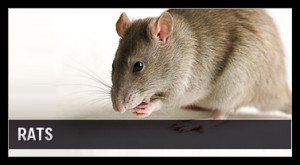A big increase in cases of a serious but rare bacterial disease called rabbit fever has doctors puzzled.
Over the past two decades, about 125 yearly cases of the disease, also referred to as tularemia have been reported in the United States. But already this year through September, there have been 100 cases in just four states and has been spreading rapidly West, according to a report released today by the Centers for Disease Control and Prevention (CDC).
Those cases are amoung people ages 10 months to 89 years in Colorado (43 cases), Nebraska (21), South Dakota (20) and Wyoming (16). One man, who was 85, died from the disease, and 48 others were hospitalized, according to the report “This was something we noticed happening here in Nebraska, and when we contacted our colleagues in neighboring states, they were having similar experiences," Dr. Caitlin Pedati, of the Nebraska Department of Health and Human Services and the CDC and lead author of the report In Colorado, for example, the number of cases this year is nearly 10 times higher than the average number of yearly cases in that state between 2004 and 2014. The disease can be life-threatening according to the CDC. The bacteria that cause the disease infect animals such as rabbits and rodents, as well as humans. People can become infected by getting bit by ticks, fleas, touching an infected animal, drinking contaminated water or even breathing in the dust from dried rodent urine or droppings that have become airborne, the CDC says.
“For example it can spread by a landscaper who mowed over a dead infected rodent or it’s droppings and breathing in the bacteria in the resulting aerosolized particles”, Pedati explained.
Pedati said, “Symptoms of a tularemia infection usually show up three to five days after exposure to the bacteria, though it could take longer, according to the report. In general, symptoms could include fever and chills with muscle or joint pain, a cough or trouble breathing, skin ulcers (where the bacteria entered the body), pink eye, stomach pain with vomiting and diarrhea, and a (sore throat) if the bacteria are ingested They are not sure what has caused the recent rise in cases. However, the drought, which has caused hungry rodents to move closer to heavy populated areas looking for food and water could be possible explanation, they noted.
Experts say,” Tularemia is considered by some experts to be one of the five diseases, which include anthrax, with the greatest potential for use in biological warfare.
With places like Mission Viejo Palmia, a gated community and Leisure World in Seal Beach and other areas seeing a surge in the rabbit population, increases in this disease is inevitable.



